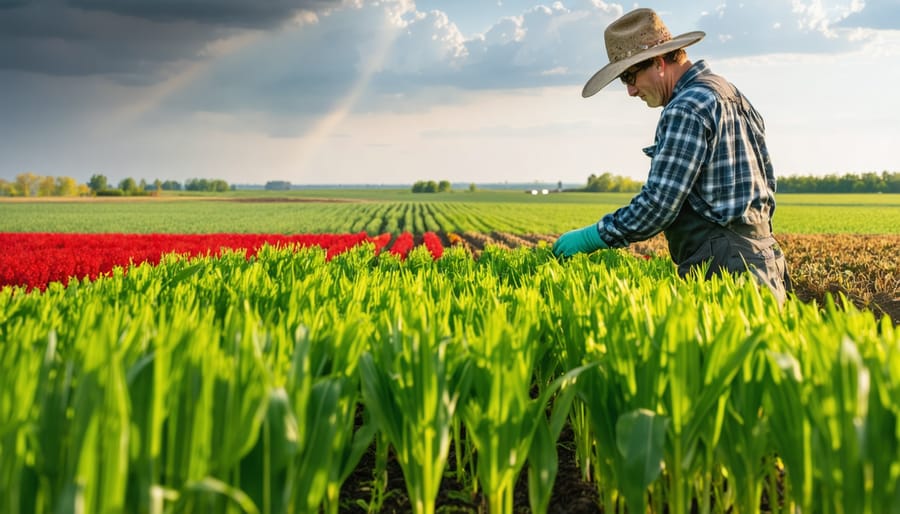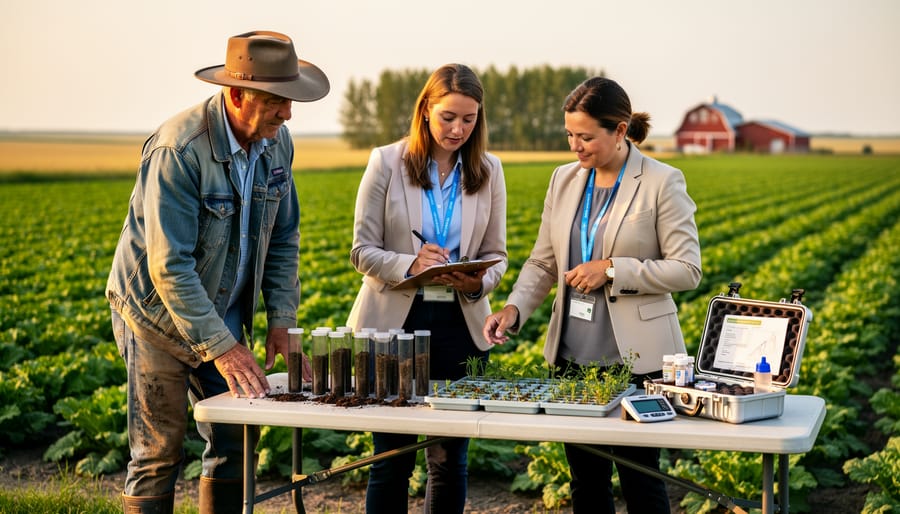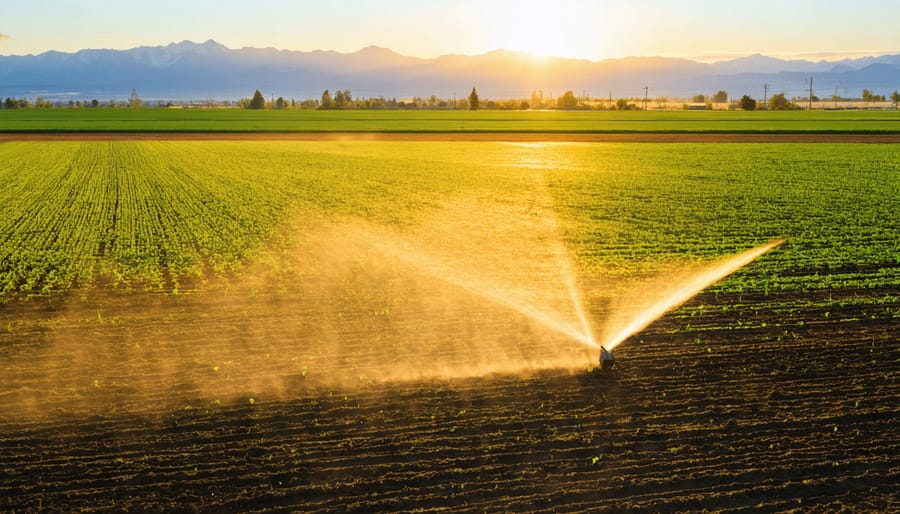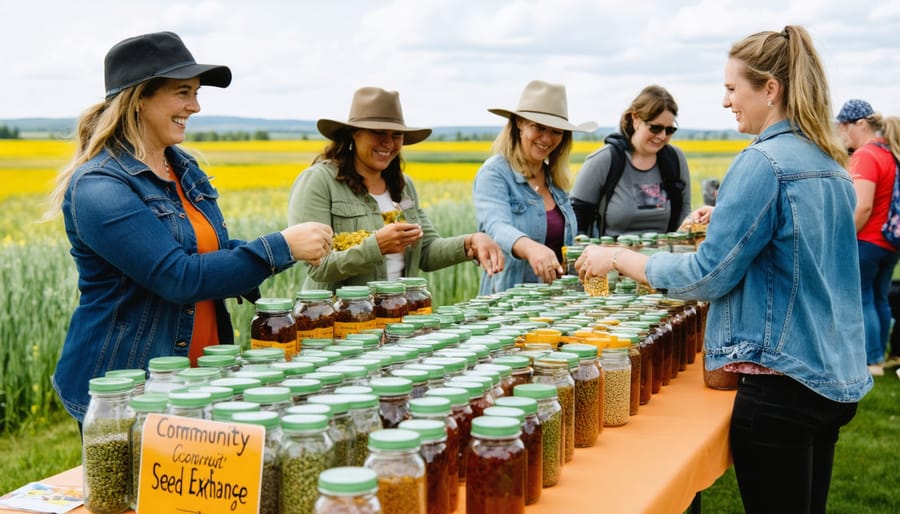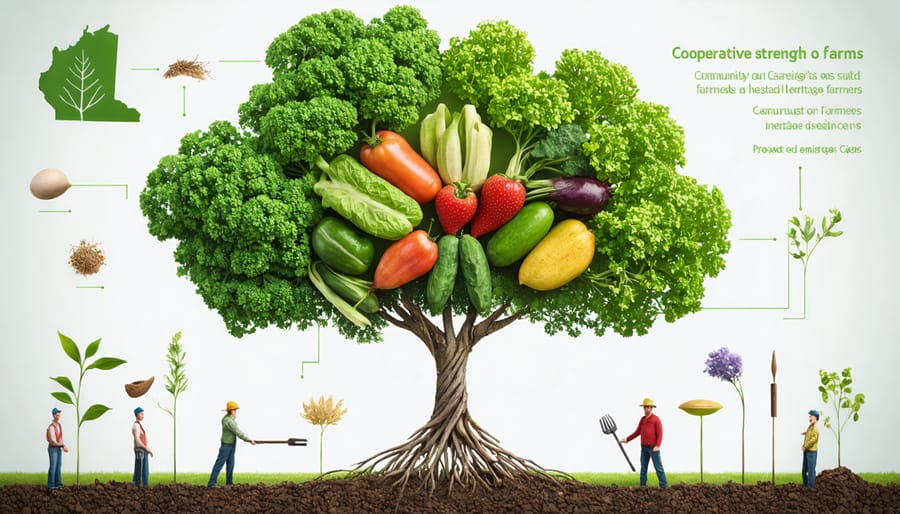The Global Crop Diversity Trust stands as humanity’s frontline defense in preserving agricultural biodiversity and building resilient food systems for future generations. Operating from its headquarters in Bonn, Germany, this international organization safeguards an irreplaceable collection of over 850,000 unique crop varieties within a network of seed banks worldwide. For Canadian farmers, particularly in Alberta’s diverse agricultural landscape, this global effort translates into tangible benefits through access to climate-resilient crop varieties and enhanced breeding resources. The Trust’s work ensures that even as environmental challenges mount, our agricultural communities maintain access to the genetic diversity needed to adapt and thrive. By connecting local farming operations to an international network of crop diversity preservation, the Trust helps bridge the gap between global conservation efforts and regional agricultural sustainability, providing Canadian producers with vital resources for maintaining productive, sustainable farming operations in an increasingly unpredictable climate.
The Global Crop Diversity Trust: Our Agricultural Safety Net
How the Trust Protects Our Food Future
The Global Crop Diversity Trust operates an impressive network of seed vault systems worldwide, with the Svalbard Global Seed Vault in Norway serving as the cornerstone of global crop preservation. These facilities maintain seeds at -18°C, ensuring their viability for centuries. In Canada, we partner with several regional seed banks, including the Plant Gene Resources of Canada in Saskatoon, which preserves over 110,000 unique seed samples.
The preservation process involves carefully drying seeds to reduce their moisture content to around 5%, then storing them in specialized foil packages. These packages are monitored regularly using state-of-the-art technology to maintain optimal conditions. For Alberta farmers, this means that heritage crop varieties and vital genetic diversity remain safely preserved for future growing seasons.
The Trust also supports a digital database system that tracks seed varieties, their origins, and specific traits. This information helps Canadian farmers identify and access crop varieties that might perform well in our unique growing conditions, particularly as we adapt to changing climate patterns. Through these preservation efforts, the Trust ensures that agricultural innovations and traditional crop varieties remain available for generations to come.

Alberta’s Role in Global Crop Conservation
Alberta plays a vital role in global crop conservation through its extensive seed banking network and collaborative research initiatives. The University of Alberta’s extensive seed vault, established in partnership with the Global Crop Diversity Trust, houses over 2,500 unique crop varieties native to Western Canada’s prairie regions.
Local farmers across the province actively contribute to conservation efforts by maintaining heritage seed collections and participating in seed exchange programs. The Olds College Centre for Innovation, working alongside Alberta’s agricultural communities, has developed specialized preservation techniques for cold-climate crops, sharing this expertise with international partners.
Notable success stories include the preservation of specific wheat varieties adapted to Alberta’s unique growing conditions. These efforts have attracted international attention, with agricultural delegations from similar climate regions visiting to learn from Alberta’s conservation methods.
The province’s seed saving network, supported by Agriculture and Agri-Food Canada, connects local farmers with global preservation initiatives, ensuring that Alberta’s agricultural heritage contributes to worldwide food security efforts while maintaining regional crop diversity for future generations.
Regional Networks: The Backbone of Crop Diversity
Prairie Crop Protection Network
The Prairie Crop Protection Network stands as a shining example of regional collaboration in preserving crop diversity across Western Canada. Established in 2015, this innovative partnership between farmers, agricultural scientists, and Indigenous communities has successfully preserved over 150 heritage crop varieties native to the Prairie provinces.
The network’s strength lies in its community-driven approach, with more than 400 participating farms across Alberta, Saskatchewan, and Manitoba. Local farmers maintain seed libraries and exchange knowledge about traditional growing methods, while receiving support from agricultural extension services and research institutions.
A notable success story comes from the Red Deer Valley region, where network members have revived several cold-hardy wheat varieties that show promising resilience to climate fluctuations. These varieties, developed through generations of careful selection by early Prairie settlers, now help modern farmers adapt to changing growing conditions.
The network also emphasizes Indigenous agricultural heritage, working closely with First Nations communities to preserve and document traditional crop varieties. This includes the successful preservation of several varieties of beans and corn that have been grown in the region for centuries.
By connecting local efforts with global conservation initiatives, the network demonstrates how regional cooperation can contribute to worldwide crop diversity while maintaining strong roots in local farming communities.

Indigenous Knowledge Integration
The Global Crop Diversity Trust recognizes that indigenous communities have been stewards of agricultural biodiversity for generations. Their traditional farming practices have proven invaluable in preserving crop varieties and maintaining resilient food systems.
In Alberta, partnerships between indigenous communities and agricultural organizations have led to the preservation of heritage crop varieties like Painted Mountain corn and various bean species. These collaborations demonstrate how ancient wisdom can complement modern conservation efforts.
Indigenous knowledge systems emphasize crop rotation, companion planting, and seed saving techniques that naturally maintain genetic diversity. For example, the Three Sisters planting method – combining corn, beans, and squash – not only preserves these crop varieties but also enhances soil health and productivity.
The Trust actively works with First Nations communities to document and integrate their agricultural practices into broader conservation strategies. This includes supporting seed-saving networks and educational programs that pass down traditional knowledge to younger generations.
For Canadian farmers, incorporating these time-tested methods alongside modern techniques can strengthen their role in crop diversity protection. Many Alberta farmers have successfully adopted indigenous intercropping techniques, reporting improved soil conditions and more resilient harvests while contributing to the preservation of important crop varieties.
Practical Steps for Alberta Farmers
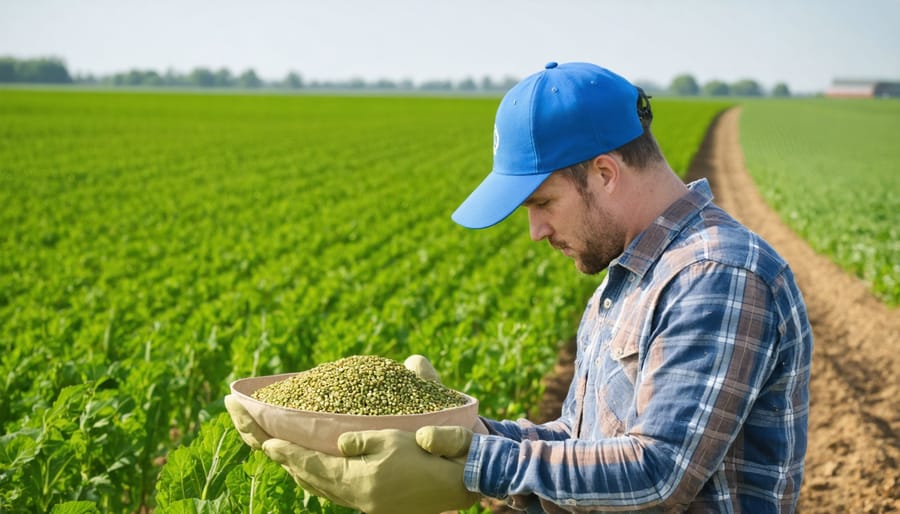
On-Farm Conservation Methods
On-farm conservation methods play a vital role in preserving crop diversity right where it matters most – in our fields. Here in Alberta, many farmers are embracing these practices through innovative approaches that blend traditional knowledge with modern techniques.
One effective method is maintaining heritage seed collections, where farmers preserve and grow traditional crop varieties alongside modern ones. This practice, successfully implemented by several Alberta grain producers, helps maintain genetic diversity while providing crop insurance against changing climate conditions.
Crop rotation and intercropping systems are equally important conservation strategies. By growing different crop varieties in sequence or combination, farmers create diverse agricultural ecosystems that support genetic preservation. For instance, rotating wheat varieties with heritage legumes not only maintains crop diversity but also improves soil health.
Participating in seed-saving networks has become increasingly popular among Canadian farmers. These community-based initiatives allow farmers to exchange seeds and knowledge, creating a living library of crop varieties adapted to local conditions. The University of Alberta’s seed library program exemplifies this approach, connecting farmers across the province.
Field buffer zones and isolation distances between crop varieties prevent cross-pollination, ensuring genetic purity of preserved varieties. These practical measures, combined with careful record-keeping of plant characteristics and growing conditions, help maintain the integrity of diverse crop populations for future generations.
Joining Regional Conservation Networks
Getting involved with regional conservation networks is a practical way for Alberta farmers to contribute to global crop diversity while strengthening local agricultural communities. Start by connecting with established organizations like the Alberta Conservation Association or the Prairie Conservation Forum, which offer valuable networking opportunities and resources.
These networks typically host regular meetings, workshops, and field days where farmers can share knowledge about seed saving, heritage crop varieties, and sustainable farming practices. Many Alberta-based groups also coordinate seed exchanges and maintain community seed banks, providing excellent opportunities for hands-on involvement.
To join, reach out to your local agricultural extension office or conservation authority. They can direct you to nearby networks and upcoming events. Consider participating in citizen science projects that document local crop varieties and traditional farming methods. Many networks also offer mentorship programs pairing experienced seed savers with newcomers.
Remember that successful conservation efforts often start small. Begin by dedicating a small portion of your land to growing and preserving heritage varieties, then expand your involvement as you gain experience. Your participation helps preserve agricultural biodiversity while building resilient local food systems.
Success Stories from Canadian Farms
In the heart of Southern Alberta, the MacKenzie family farm stands as a testament to successful crop diversity protection. Over three generations, they’ve transformed their 800-hectare operation into a living seed bank, preserving over 30 heritage grain varieties. “We started small, with just five varieties of wheat,” shares Sarah MacKenzie. “Today, we’re helping preserve crops that might otherwise disappear from our agricultural landscape.”
The Lethbridge Seed Savers Network, established in 2015, has connected more than 200 local farmers who actively participate in crop preservation. Their collective efforts have successfully preserved 15 indigenous crop varieties, including several types of beans traditionally grown by First Nations communities.
Near Red Deer, the Peterson Agricultural Cooperative has pioneered a community seed exchange program that’s become a model for other regions. “Last year alone, we facilitated the exchange of over 1,000 kilograms of diverse seed varieties,” notes cooperative leader James Peterson. Their success stems from combining traditional farming wisdom with modern storage techniques.
The Mountain View Heritage Grain Project demonstrates how crop diversity can thrive in challenging conditions. Working with climate-resilient varieties, participating farms have reported a 30% increase in yield stability during extreme weather events. This initiative now involves 45 farms across central Alberta.
These success stories showcase how Canadian farmers are actively contributing to global crop diversity while strengthening their local agricultural communities. Through collaboration, innovation, and dedication to preserving agricultural heritage, these initiatives prove that protecting crop diversity isn’t just about conservation – it’s about building a more resilient and sustainable future for Canadian agriculture.
The Global Crop Diversity Trust represents a crucial bridge between international seed conservation efforts and local farming practices here in Alberta. As stewards of our agricultural heritage, we have both the opportunity and responsibility to contribute to this global initiative while strengthening our own farming operations. By participating in seed saving programs, diversifying crop selections, and sharing knowledge within our farming communities, we can help build a more resilient food system for future generations.
Consider reaching out to your local agricultural extension office to learn more about participating in seed conservation programs. Together, we can preserve our agricultural biodiversity while maintaining profitable and sustainable farming operations. Every farm that contributes to crop diversity adds another layer of security to our food system. Let’s take action today to ensure a robust and diverse agricultural future for Alberta and beyond.

